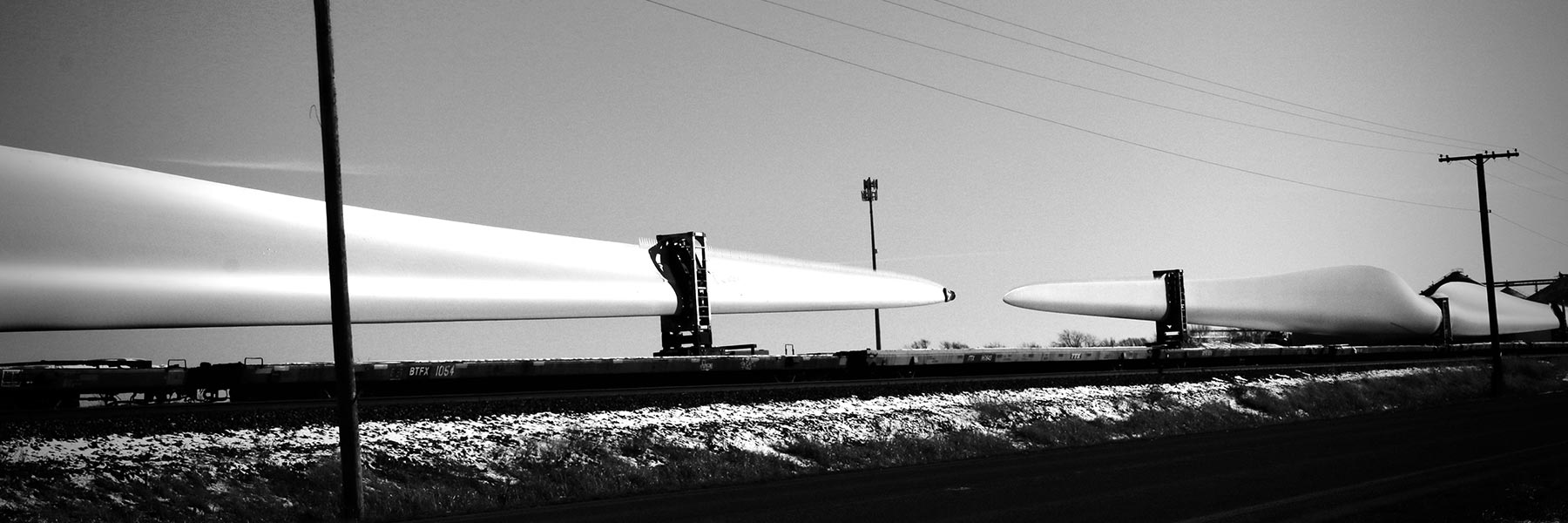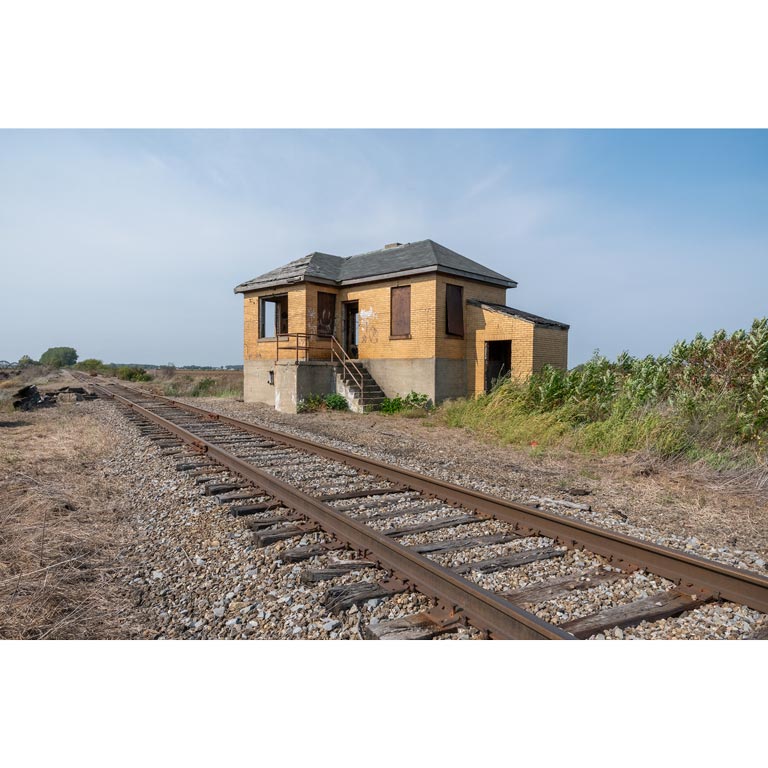Exhibition: February 9 – March 12, 2021
Event:
Hoosier Lifelines Speaker Series: Environmental Justice in a Moment of Danger
Join us for a discussion on what recent developments in the political and environmental spheres mean for the environmental justice movement.
--
The Grunwald Gallery at Indiana University is pleased to present Hoosier Lifelines: Environmental and Social Change Along the Monon, 1847-2020, an artistic and historical exploration of Indiana’s changing environment along the remains of the historic Monon Railroad, from the Ohio River’s banks to Lake Michigan’s dunes.
The Monon’s centrality to Indiana’s social and economic life was captured by the company’s mid-twentiethcentury nickname: the “Hoosier Lifeline.” Today, its trains gone and its tracks largely deserted, the Monon’s path serves as the foundation on which to build a new understanding of the interplay of landscapes, ecosystems, and communities across time and space. At a time when Hoosiers face growing risks from environmental change, public health threats, and economic turmoil, we return to Indiana’s Lifeline to ask:
What becomes of the future we once imagined for ourselves? What replaces the network of resources, communities, and workers that once brought our state together? What will sustain those communities in a time of diminishing resources and accelerating environmental change?
More than a reflection on one rail line, Hoosier Lifelines’ assembled photographs, artifacts, and historical narratives illuminate the long history of what scientists now call the Anthropocene—the age of humans—in Indiana. By bringing artistic and historical study to bear on the network of industry, commerce, agriculture, and energy that Hoosiers built during the line’s 100+ years of service, the exhibition transports visitors to a new appreciation of a familiar place.
The exhibition will be available to view during gallery hours and, by means of a virtual 3-D walkthrough, via the Grunwald Gallery’s website. Hoosier Lifelines will travel from Bloomington to key cultural institutes at the Monon’s endpoints--New Albany’s Carnegie Center for Art and History (July-October 2021) and Michigan City’s Lubeznik Center for the Arts (October 2021-January 2022). The exhibition will also serve as a space for public presentations that engage audiences through compelling stories about their local environmental and social histories and through shared discussions of the challenges we face today.
At a time when the cultural lore of the Monon is alive and well, Hoosier Lifelines draws a new kind of throughline between our past and where we are today. In historical artifacts and contemporary photographs, the exhibition calls on Hoosiers to imagine new Indiana’s “Lifelines”—new visions of what sustains us, what brings us together, what connects us all.
EXHIBITION CREDITS
Hoosier Lifelines features contemporary photographs by:
Richard Koenig, Genevieve U. Gilmore Professor of Art, Kalamazoo College, Kalamazoo, MI Betsy Stirratt, Director, Grunwald Gallery of Art, Indiana University, Bloomington Maria Whiteman, Artistic Social Practice Fellow, Indiana University Environmental Resilience Institute
Historical interpretation is provided by:
Elizabeth Grennan Browning, Midwestern/Indiana Community History Fellow, Indiana University Environmental Resilience Institute Eric Sandweiss, Thomas and Kathryn Miller Professor of History, Indiana University Bloomington.
Lenders to the exhibition include: the Floyd County Historical Society, Floyd County Public Library, Monroe County History Center, Tippecanoe County Historical Association, Indiana Geological and Water Survey, Monon Railroad Historical-Technical Society, Inc., Barriger National Railroad Library, St. Louis Mercantile Library at UMSL, Indiana University Herbarium, Indiana University Paleontology Collection, the Mathers Museum and local residents.
EXHIBITION SPONSORS
The exhibition and events are made possible by the Environmental Resilience Institute, and the Eskenazi School of Art, Architecture + Design at Indiana University.



